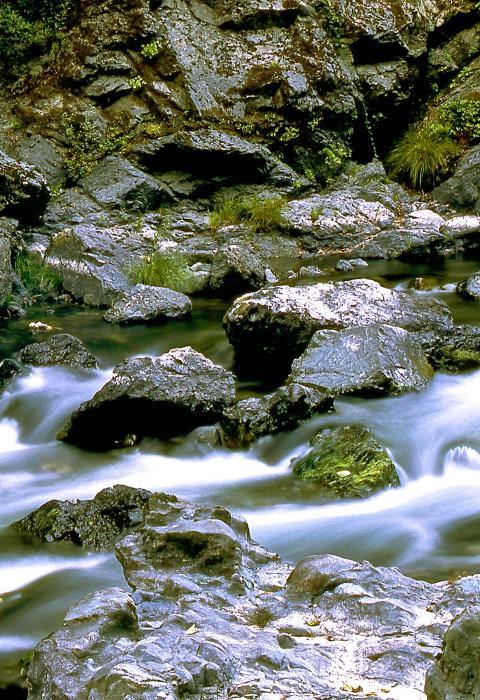Elk River
Oregon
The Elk River is in Curry County three miles north of Port Orford, along the beautiful southern Oregon Coast. Seventeen miles of the mainstem and a two-mile segment of the North Fork Elk were designated in 1988; the remainder of the North Fork and the South Fork Elk were added in 2009. The outstandingly remarkable values of the Elk River are its fisheries and water quality.
Designated Reach
October 28, 1988, and March 30, 2009. The main stem from the confluence of the North and South Forks of the Elk River to Anvil Creek. The North Fork from its source in Section 21, Township 33 South, Range 12 West, to its confluence with the South Fork. The South Fork Elk from its source in the southeast quarter of Section 32, Township 33 South, Range 12 West, to its confluence with the North Fork.
March 12, 2019. Numerous tributary designations:
- Bald Mountain Creek from its headwaters, including Salal Spring, to its confluence with the Elk River.
- The South Fork of Bald Mountain Creek from its headwaters to its confluence with Bald Mountain Creek.
- Bear Creek from headwaters to the confluence with Bald Mountain Creek.
- Blackberry Creek from its headwaters to its confluence with the Elk River.
- The East Fork of Blackberry Creek from its headwaters in T 33 S, R 13 W, Section 26, Willamette Meridian, to its confluence with Blackberry Creek.
- Butler Creek from its headwaters to its confluence with the Elk River.
- The East Fork of Butler Creek from its headwaters on Mount Butler in T 32 S, R 13 W, Section 29, Willamette Meridian, to its confluence with Butler Creek.
- Lost Creek from its headwaters to its confluence with the Elk River.
- McCurdy Creek from its headwaters to its confluence with the Elk River.
- Milbury Creek from its headwaters to its confluence with the Elk River.
- Panther Creek from its headwaters, including Mountain Well, to it confluence with the Elk River.
- The East Fork of Panther Creek from it headwaters to the confluence with Panther Creek.
- The West Fork of Panther Creek from its headwaters to the confluence with Panther Creek.
- Platinum Creek from its headwaters to to its confluence with the Elk River.
- Purple Mountain Creek from its headwaters in Sections 35 and 36, T 33 S, R 14 W, Willamette Meridian, to its confluence with the Elk River.
- Rock Creek from its headwaters to the west boundary of T 32 S, R 14 W, Section 30, Willamette Meridian.
Outstandingly Remarkable Values
Fish
The river contains very important populations of native Chinook salmon, sea-run cutthroat trout, winter steelhead, and some coho salmon. In addition to its outstanding species diversity, the Elk River provides excellent spawning and rearing habitat and is also highly valued for its productive commercial and recreational fisheries. The river and watershed are used for scientific study.
Recreation
There are three developed campgrounds within the river corridor; two sites are located along the river, Butler Bar and Sunshine Bar, and the third campground is at Laird Lake. The river itself provides many pools and swimming areas, and there are several dispersed sites along the river corridor. The Elk River attracts fishermen from the entire nation. However, the vast majority of sport fishing occurs outside the designated segment, with only a short segment of the designated river open for salmon and steelhead fishing.
Scenery
The combination of water color, exposed rock surfaces, dynamic flow, and relatively undisturbed environment creates an interesting and beautiful landscape throughout the year. The scenic quality of the river corridor draws on these features to create a significant value within the federally protected corridor. The lower section of the river flows through a steep canyon with exposed rock surfaces, forming an inner-gorge environment. Upstream, the gorge widens slightly, but the corridor remains very steep.
Water Quality
The striking blue-green water color and crystalline water quality is exceptional. Its low turbidity, cool temperatures and lack of pollutants contribute to the excellent habitat and high fisheries value. The river clears far more quickly than other streams in the region attracting fishermen and other recreationists.
Wildlife
Few northwest coastal rivers exhibit the quantity of old growth found in the Elk River basin. Wildlife species utilizing this habitat include marbled murrelet, northern spotted owl, and bald eagle.

